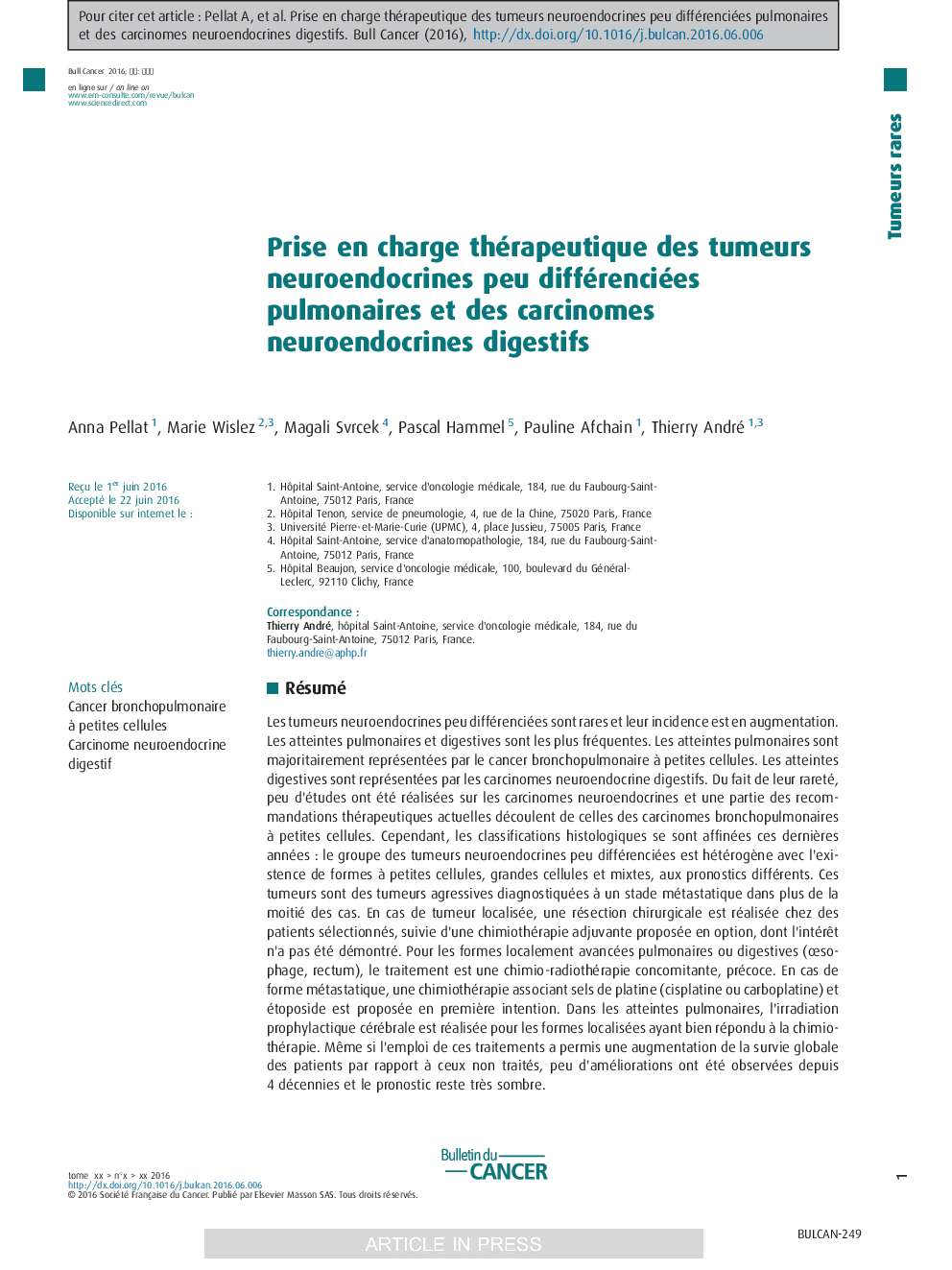| Article ID | Journal | Published Year | Pages | File Type |
|---|---|---|---|---|
| 5697466 | Bulletin du Cancer | 2016 | 16 Pages |
Abstract
Poorly differentiated neuroendocrine tumors are rare but their incidence is rising. High-grade neuroendocrine lung tumors, including small-cell lung cancer, are part of this group. Outside of the lung, they most often arise within the gastrointestinal tract (oesophagus, guts and pancreas) and are called neuroendocrine carcinomas. Due to their rarity, very little is known about neuroendocrine carcinomas of the pancreas and the gastrointestinal tract and few studies have been done. Therefore, most therapeutic recommendations are issued from studies on small-cell lung cancers. Histological scores have grown more accurate these past few years: poorly differentiated neuroendocrine tumors regroup various entities such as small-cells, large-cells and mix tumors, which seem to have different prognosis. They are diagnosed at a metastatic state in more than 50Â % of cases. In localised disease, surgery is performed on selected patients. Adjuvant chemotherapy is administered in poorly differentiated neuroendocrine tumors of the lung and is an option in neuroendocrine carcinomas, without proof of efficacy. If not operable, radiochemotherapy is done for tumors of the lung, rectum, and eosophagus. If the disease is diagnosed at a metastatic state, chemotherapy is administered with a combination of platin salts (cisplatin or carboplatin) and etoposide. In poorly differentiated neuroendocrine tumors of the lung, prophylactic cranial irradiation is performed in localized disease if there is a good response to chemotherapy. Even if these therapies have improved the overall survival, no improvement has been made during the past four decades and the prognosis remains low.
Related Topics
Health Sciences
Medicine and Dentistry
Oncology
Authors
Anna Pellat, Marie Wislez, Magali Svrcek, Pascal Hammel, Pauline Afchain, Thierry André,
